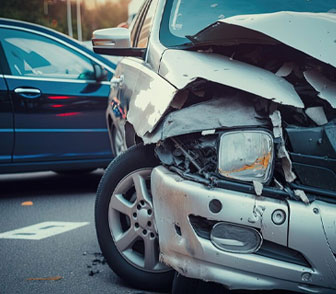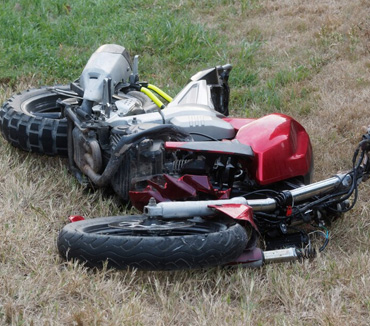Torrance Uber and Lyft Accident Lawyer
Torrance Uber and Lyft Accident Attorney
Crashes that involve rideshare drivers can cause serious injuries, including traumatic brain injury, spinal cord injury, burns, fractures, whiplash, soft tissue damage and permanent disfigurement and disability. As the passenger in a ride share vehicle, any accident you are involved in is obviously not your fault; yet you may still end up dealing with personal injuries, medical bills, and lost wages. What are your legal rights and options in this scenario? As a ride share passenger, your case is unique. The insurance claims process could involve your own car insurance, the driver’s personal insurance policy, Uber or Lyft’s insurance, and/or a third-party insurer.
You may need to consult with a Torrance car accident attorney about your claim depending on the specifics of the accident, the parties involved, and the response from the insurer when you file a claim. The good news is that, as a ride share passenger, the odds are very high that someone else’s insurance company will cover your damages since you were not an at-fault party in the crash. Since you were actively riding as a passenger, it means the app was on and Uber or Lyft will provide insurance coverage for your damages.
The only time you might encounter issues or complexities with your insurance claim is if the ride share company tries to deny your claim for some reason, offer you less than your damages are worth, or if you have the ability to file a claim against more than one party.
How Ridesharing Accidents are Different than Regular Accidents
Rideshare drivers are not employees of Lyft or Uber. This means you rarely can sue these companies for the negligence of their drivers. Of course, in many cases, even though the language of these insurance policies makes clear that the insurance policies must pay, they may look for excuses not to pay a claim. This is why an experienced attorney can be very helpful at forcing the insurance companies to honor their policies and pay for the injuries that their insured drivers cause.
Also, when you utilize a ridesharing service, you are not hiring a professional driver with specialized training, you are usually getting in a car with an average person who may have just started to pick up some extra money. And since drivers are allowed to make their own hours and work as much as they want, the driver who picks you up may be tired, and their ability to properly operate the vehicle may be impaired.
Additional factors to consider are distractions behind the wheel and the driver’s ability to safely operate the vehicle. Drivers for Uber and Lyft are required to use the services’ mobile apps to pick up fares and navigate to their destination. These apps may pose a significant distraction for the driver, and they may be involved in an accident if they do not pay attention to the road.
Rideshare Accidents: Dangerous Causes and Effects
The boom in ride-hailing and similar services certainly represents a wave of change in the way that people and goods move through our cities. In many ways these rideshare services like Uber, Lyft, Alto, and others can make roads safer. Deterring drunk drivers, cutting back on heavy congestion and traffic, and efficiently using our road and vehicle resources are all benefits that users gain. But in some ways, these providers make things more dangerous.
Common causes of accidents in ridesharing or delivery drives have much in common with any automobile accident. However, the elevated usage of technology during the drives does escalate this risk of accident. Drivers need to stay available on the phone monitoring their current ride and arranging their next pickups. Additionally, drivers are frequently dependent on GPS directions to guide their exact route and location details, further dividing their attention away from the road. Additionally, drivers are not trained by Uber and Lyft, and many work long, irregular hours, all factors that contribute to greater likelihood of accident.
Some examples of cause for accident include:
Speeding – Especially unsafe on unfamiliar roads to drivers or in heavy pedestrian traffic areas
Driver Negligence – Paying attention to their phone instead of the road
Driver Error – Failure to stay in lane, maintain control of vehicle, or communicate to other drivers
Inebriated Driving – Avoiding drunk, drowsy or distracted drivers
Nighttime Visibility – Busy venues and bright lights paired with the challenges of night driving
Vehicle Malfunction – Faulty parts, failure to maintain
Road Environment – Weather Conditions, roadway debris
Road Congestion – High traffic and chaotic areas where there is most incentive for ride-hailing
Potential Injuries
Even if there are slight differences in the main causes of these accidents, the results are very much like any disastrous motor vehicle crash, resulting in possible rollovers, rear-end crashes, head-on collisions, T-bones, sideswipes and single or multi-vehicle crashes. Any of these outcomes can result in tragic injury or even death.
- Whiplash
- Back injuries
- Fractures
- Lacerations
- Internal bleeding
- Traumatic brain injuries
Uber or Lyft Accident Liability
Unfortunately, it is oftentimes tougher to determine liability in ridesharing accidents. Uber and Lyft drivers are considered independent contractors, which is great for people who want to act as their own boss, but not great for those who are injured in these types of accidents. The breakdown of Uber and Lyft’s liability coverage is as follows:
- Period 0: This is when the driver is not logged into the rideshare app. If an accident occurs at this time, Uber/Lyft will not provide liability coverage.
- Period 1: This is when the driver is logged in but has not yet accepted a ride. If he or she causes an accident, Uber/Lyft will provide liability coverage of up to $50,000 per person injured in the accident, $100,000 total injury liability per accident, and $25,000 in property damage liability.
- Period 2: When a driver has accepted a trip and is en route to the rider and causes an accident, the liability coverage will increase to $1 million.
- Period 3: This is when an accident occurs when the rider is in the Uber/Lyft vehicle at the time of the accident. In this scenario, Uber/Lyft provides coverage of up to $1 million, as well as limited coverage for damage to the driver’s car and uninsured motorists’ coverage.
Rideshare Insurance Coverage
Auto accidents are complicated. Smartphone apps now add a whole new layer into the mix. When an Uber or Lyft driver’s app is activated from his/her smartphone, one million dollars of insurance coverage should be available to compensate for damages and injuries. However, when that same driver’s app is not activated, he/she may be considered a regular, non-commercial driver.
Unless the driver’s insurance company has been informed in advance (and an updated policy is in place), most auto policies exclude coverage when the insured vehicle is used for a commercial venture – like driving for a rideshare company.
- Uber Insurance Coverage
Uber’s insurance coverage changes depending on whether the Uber driver has a passenger in the car or is in-between customers. If an Uber driver causes an accident while there is a passenger in the car or while on the way to pick up a customer, Uber’s insurance policy will cover:
- Up to $1 million per incident for property damage and bodily injury to passengers and third parties
- Up to $1 million for bodily injury per incident if an uninsured or underinsured driver caused the accident
However, if the accident happens while the Uber driver has the app open and is waiting to match with a rider, the insurance policy coverage changes. In this case, Uber’s insurance policy will cover:
- $50,000 per person liability coverage
- $100,000 per accident liability coverage
- $25,000 for property damage
This coverage only applies if the driver’s own insurance is insufficient to cover all of your damages.
- Lyft Insurance Coverage
Lyft’s insurance coverage is almost the same as Uber’s coverage. If there is a customer in the car or if the driver is on the way to pick up a customer, Lyft’s insurance covers:
- $1 million per accident
- $1 million for uninsured or underinsured drivers
When the Lyft driver is between customers, that insurance coverage changes. If the driver is on duty but does not have a request for a pick up, Lyft’s insurance covers:
- $50,000 per person liability coverage
- $100,000 per accident liability coverage
- $25,000 for property damage
What Should You Do After a Rideshare Accident?
Whether you are a Lyft passenger or driver, you can take certain steps to protect your ability to collect compensation after a car accident. These steps do not differ much from any other auto accident:
- Call the police – An officer will secure the scene, investigate the crash and prepare an accident report.
- Gather evidence – Take photos, get witness names and contact information and keep all of your medical bills, correspondence from Lyft or its insurance company and receipts of other accident-related out-of-pocket expenses.
- Get medical attention – You should see a doctor as soon as possible in order to get thoroughly checked for injuries and started on a treatment plan. Timely documentation of your injuries will be important for any claim(s) you file.
- Report your accident to Lyft – As early as you can, you should report your accident to Lyft through its website or a feature on your ride-hailing app. Your report will document your crash like the police report and medical records. However, don’t admit or assign fault. Just stick to the facts.
- Get help from an attorney – Before you give a recorded statement to Lyft or an insurance company, and before you accept any settlement offer, you should speak with an experienced auto accident lawyer first. The lawyer will protect your rights and fight for the compensation you are due.
Why You Need a Lawyer After a Rideshare Accident
After a ride share accident, it is essential to make sure the event is documented. For serious injuries especially, call 911 and immediately request emergency assistance to the scene. Document information about the drivers, vehicles, passengers, witnesses, and any others involved to the greatest extent you can, or in cooperation with Police direction. This information after all motor vehicle accidents is essential to ensuring justice is served and victims receive just compensation for their losses.
It is also good idea to be represented by a Torrance Personal Injury Attorney after any car accident. If you or a loved one has suffered injury in an Uber or Lyft accident and have questions about seeking legal action, call us now at 1-877-241-9554 to learn more about your options. A free consultation is just a phone call away.
Request A
Free Consultation
Fields Marked With An ” *” Are Required










